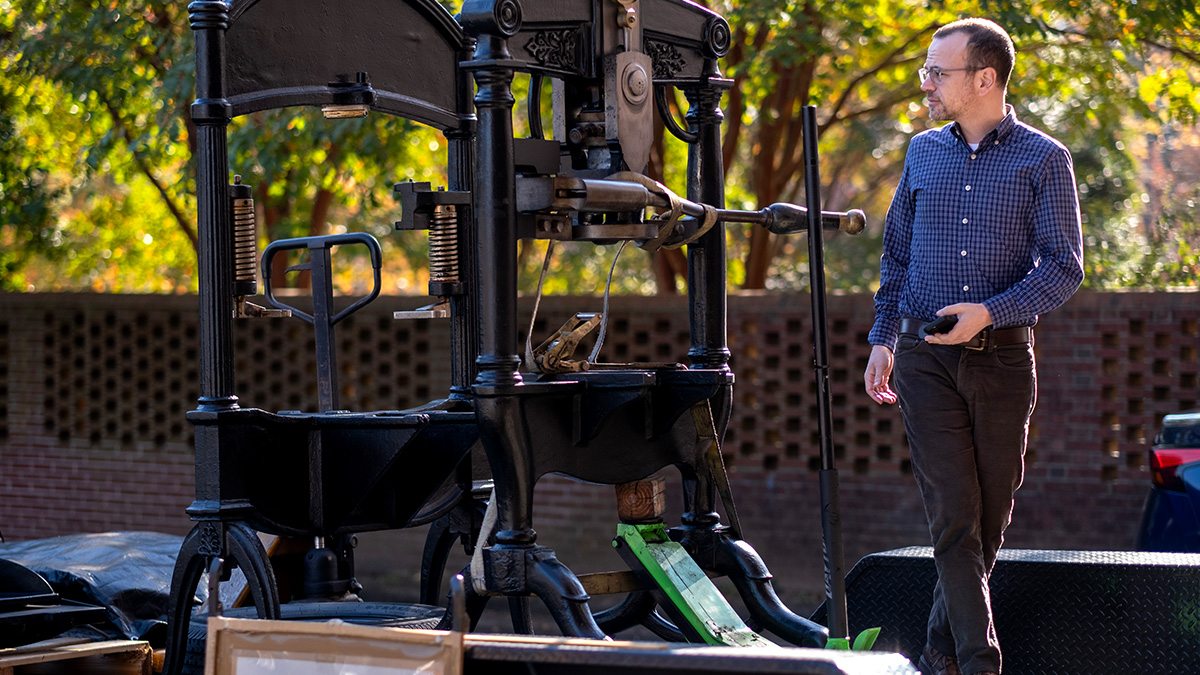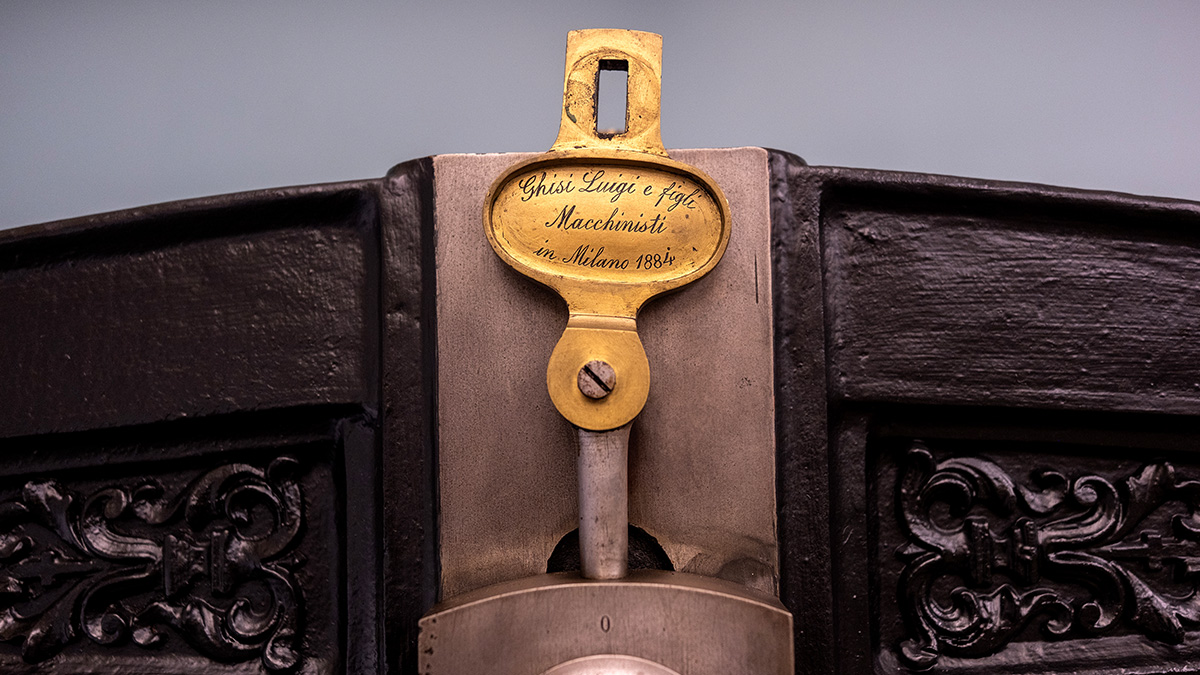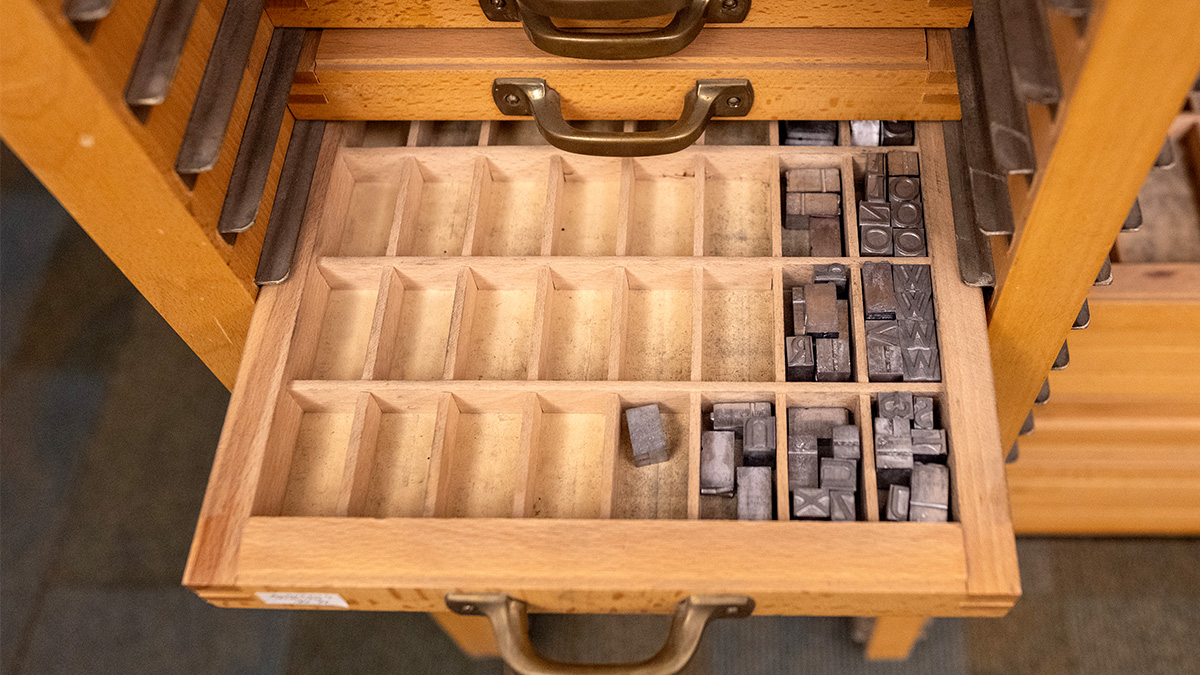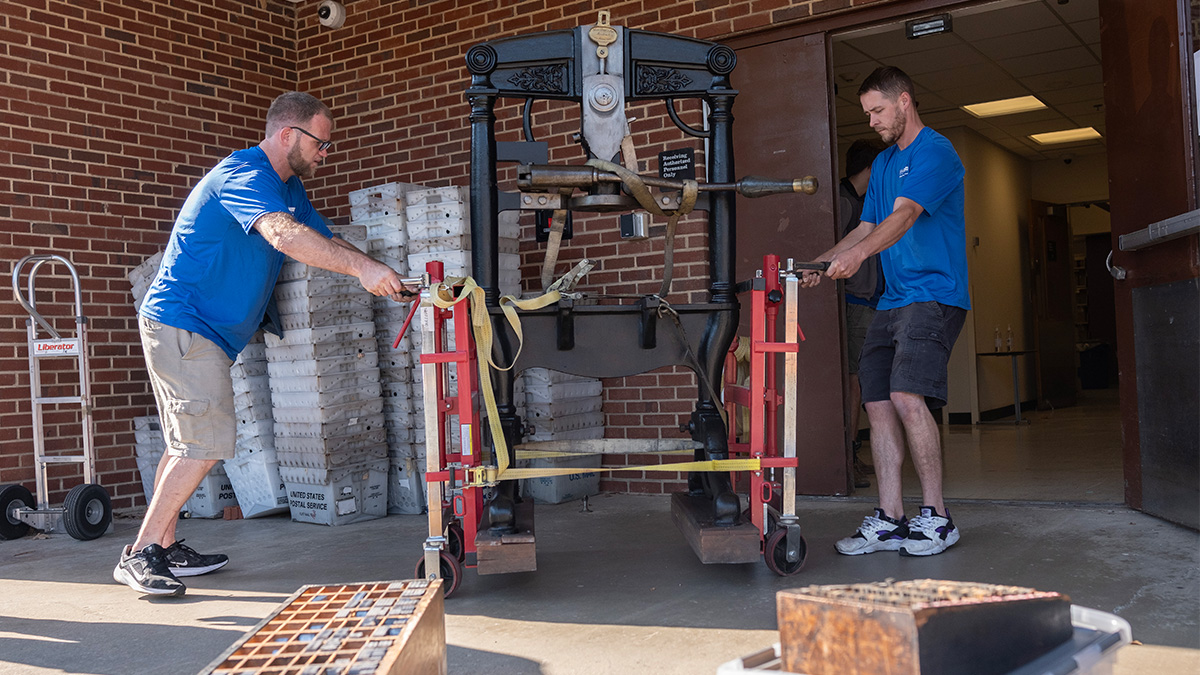Historic printing press finds home at Davis Library
University Libraries plans to teach students about the history of printing through hands-on learning.

Last week, the University Libraries acquired a 19th century printing press that now resides in Davis Library. The Libraries staff intends for the press to offer students an experiential learning opportunity.
“We’re interested in creating spaces where students can engage with learning as a hands-on activity and do some of the things that they’re learning about, theoretically, in classes. Davis Library provided the best location for being able to put the press to use for students in a variety of different educational opportunities beginning this spring semester,” said Elizabeth Ott, interim associate University librarian for special collections and director of Wilson Library.

An 1884 Luigi Ghisi Albion press is delivered to Davis Library.(Jon Gardiner/UNC-Chapel Hill)
The short-term plan is to use it as a demo press to teach students about the history of printing. While the press will be available for students to observe and learn from, they will need training to operate it safely. Its long-term use is still being explored. The press should become operational in spring 2024, possibly launched with a special event.
“Students could come as part of a class, and a library staff member would teach them about the press, about its operation and then they would be able to print something on the press and take it home with them,” Ott said.
The press was part of a donation from the Peterson family. In fall 2019, the Petersons began conversations with the University Libraries and UNC Press about donating two historic printing presses and 140 cases of movable metal type. The older printing press, an 1847 R. Hoe Washington press known for its relative light weight, is on display at UNC Press. The one housed in Davis is an 1884 Luigi Ghisi Albion press, popular in commercial book printing.

Included with the press are oak cabinets with approximately 140 drawers holding various type faces.
(Jon Gardiner/UNC-Chapel Hill)
Iron presses, like the two donated, were considered revolutionary for their easier use due to the toggle mechanism for pulling the press and portability compared to their large wooden predecessors. The Davis press was manufactured in Italy, and later purchased by letterpress pioneer Richard-Gabriel Rummonds, author of the book “Printing on the Iron Handpress.” Rummonds moved the press with him to Cottondale, Alabama, where he founded the book arts program at the nearby University of Alabama at Tuscaloosa. When Gregor G. Peterson (1932-2001) acquired the press in the 1990s, he moved it to Lake Tahoe, Nevada, where he established the Huckleberry Press imprint to print fine press books. Thanks to Peterson’s sons Eric and Chris, and with the support of a gift from John A. Powell ’77, the press now finds a permanent home at Carolina.

In order to move the approximately 1,700-pound press, carts used for moving pianos are utilized.
(Jon Gardiner/UNC-Chapel Hill)
The Libraries staff hopes the press will bring printing to life for students but also encourage thoughtfulness around the uniqueness of human communication and how it’s changed over time.
“One of the things that students can learn from it, even if they never use it, is the fact that every book that you encounter, including the ones that were printed just yesterday, are things that were manufactured by real people,” Ott said. “It can teach us a lot about how humans communicate. Printing was a major way that people were able to communicate across distance in the past, and machines like these printing presses drove that communication.”







